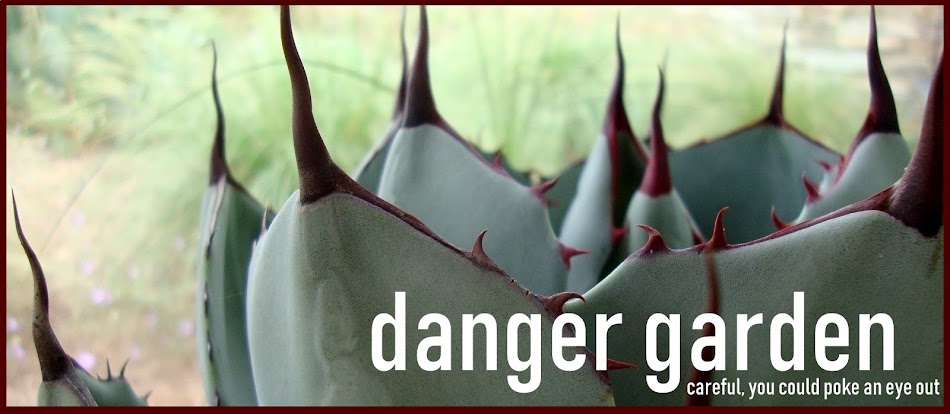Spring is doing its best to try and make me forget about the damage of winter. I appreciate the effort and I'm enjoying the heck out of it. But I'm still feeling the burn! That said I want to share with you some of the good things happening in the garden right now.
New growth on the daphniphyllum is always bright and gorgeous. Below is the variegated plant, Daphniphyllum macropodum 'Ki Midori Nakafu'—the leaves start out chartreuse and as they mellow the variegation shows up.
And this the straight up Daphniphyllum macropodum...(no variegation).
Another shot of the variegated version, with flowers (they never get much better than that). I had a third plant, non variegated, but was in a container and it looks like the winter storm was too much for it. Bummer.
Doing my annual cut back on the Akebia longeracemosa 'Victor's Secret' (it wants to own the entire garden, plus the one next door) I noticed the fantastic lichen on the fence.
The fence was built in early 2014, and I still think of it as new. In reality 10 years have passed.
Here's the akebia. I love the foliage almost as much as the flowers (which are on the way).
In the same general area is the Quercus dentata 'Pinnatifida’ (Cutleaf Emperor Oak), also dating to 2014 for when it was planted in my garden.
This entire area was newly planted that spring, and then the 2014 Portland Fling happened that July. I look back on how new everything was then and cringe at the fact almost 100 people were here to see the baby plants!
Speaking of baby, the new quercus foliage is adorable, covered with peach fuzz.
One of the mahonia that is recovering from the winter die-back, M. x media 'Marvel'...
Neither of my Schefflera delavayi missed a beat over the winter, and the new growth is always spectacular.
Disporum cantoniense 'Night Heron' with a pyrrosia planting that spent all winter hanging on the fence, except for the week of horrid temperatures when it was tucked into the greenhouse.
Another view of 'Night Heron'.
Fertile fronds of Struthiopteris spicant, aka Blechnum spicant, aka deer fern.
I'm so thrilled that my Convallaria majalis 'Aureovariegata' (variegated lily of the valley) is bulking up. Thankfully the foliage is more important to me than the flowers, as I have only two stems of blooms.
This photo is a couple weeks old now (taken 4/14) and things have already changed, but I love the combo of new fronds on the Adiantum venustum (Himalayan maidenhair) with the Veratrum californicum and Podophyllum peltatum.
Onoclea sensibilis (sensitive fern) with it's spectacular brown outline—which only lasts a few days before it fades to green.
The fine black lines of Adiantum venustum fronds.
New pyrrosia leaves/fronds are adorable, don't you think?
Paris quadrifolia
Epimedium × rubrum, this plant looked great even after the winter storm, thus I added five more to the garden.
Clematis 'Pixie' blooms.
Blechnum penna-marina, aka Austroblechnum penna-marina, aka alpine water fern
Magnolia laevifolia
Such a fabulous small flower.
Speaking of small flowers, Saxifraga × urbium 'Aureopunctata' is sending up tiny little flowers all over the garden. Hundreds of them. I am trying so hard to like them and not be annoyed by them. Somedays it works, others—not so much.
Aquilegia viridiflora Chocolate Soldier’
Pacific Coast Iris hybrid ‘Wildberry Shortcake’
Leucothoe fontanesiana 'Rainbow' (L) with the blooms of Lewisia cotyledon 'Sunset Series' (R).
That lewisia again.
And another, so VIBRANT it wants to break the camera every time. NoID.
Last shot, this from inside the house. I cut back my Rhododendron laramie in February, it was leggy and suffering damage from the winter storm.. Naturally I stuck the bits I cut in water, and what do you know, they've pushed out new foliage. No roots, but definitely responsible for weeks of "in a vase" enjoyment. Plants are amazing!
All material © 2009-2024 by Loree L Bohl. Unauthorized reproduction prohibited and just plain rude.













































































